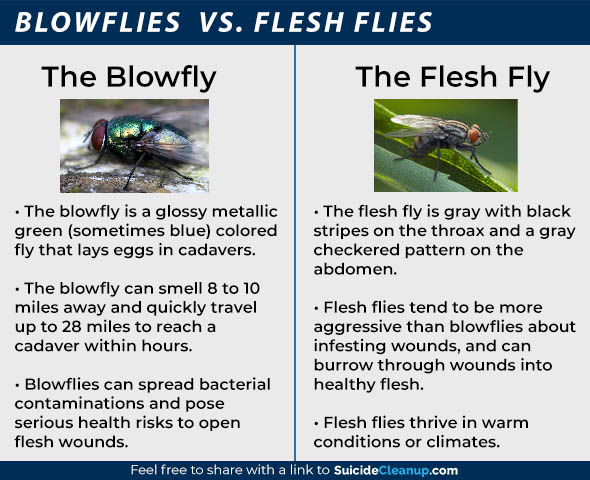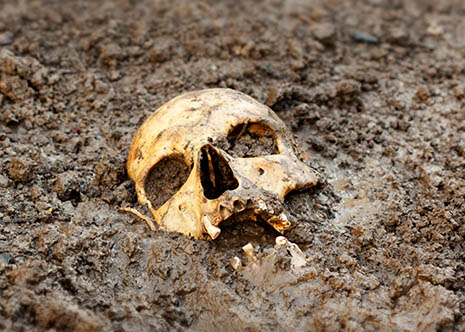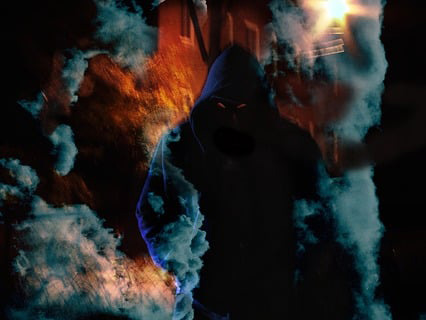
What are Self Affirmations?
April 13, 2023
How Culture and Suicide Differs and Affects Different Countries
May 18, 2023Families and individuals facing a tragedy, whether it be a suicide, unattended death, homicide, or another situation involving a corpse, are generally unable to enter the premises even after the corpse has been removed. Decaying organic matter left behind from the remains is left until a trained professional cleanup company can remove and restore it. With decaying organic matter comes the infamous decomposition odor. Decomposition odor is a big reason why a building might be condemned as hazardous–though the exact reasons why are poorly understood.
Although some may have allergic reactions to the smell, the smell itself doesn’t cause respiratory disease. As death odor remediators for over 20 years, we’ll explain in greater detail how these odors can be considered harmful. Firstly, the smell can cause emotional trauma, since smelling a dead body raises similar mental alarm, anxiety, and torment as seeing a dead body. Secondly, an odor can indicate the growing presence of bacteria, pathogens, and pests that feed off the decaying matter and create unsanitary and unsafe conditions.
A building may be condemned as an emergency situation because it only takes a few hours for the growth of bacteria and pests to take over an area. That’s also why you’d want to call a cleanup company like SCU as early as possible.
Since most of the harmful pathogenic material can’t be seen by the naked eye, it’s important to limit exposure as much as possible. The use of special equipment and cleaning supplies are best used for these situations and teams like Suicide Cleanup are certified and equipped to help protect the public and keep families already grieving safe during emergencies like these.
What do harmful decomposition odors smell like?
The smell of decomposition has been compared to “rotting cabbage, rotten eggs, human feces”–and others have even described it as way more intense. When putrefaction sets in (typically within 24-48 hours), you’ll likely recognize the odor as a sickly, sweet smell. It may even smell like rotting eggs or a strong musty, earthy swamp smell.

The smell of a dead body has been compared to an intense rotting egg odor.
In 99% of the cases, you’ll just know. Humans have an innate ability to distinguish these types of odors. Your instinct is pretty strong and reliable–definitely trust it here.
The Health Risks Involved with Putrefaction Odors
Sometimes you may hear decomposition odors referred to as “putrefaction” odors. This is because a corpse undergoes several stages of decomposition. During the first stage of decomposition, odors develop with putrefaction. Putrefaction refers to the enzymatic breakdown of organic matter by potentially harmful bacteria. The process does not stop until the remains are completely decomposed or discarded by a professional crew.
Although some studies found that inhaling the odor triggers a fight-or-flight or emotional response in the human body, there is no evidence that the odors do anything more than that. The risk of illness and disease stems from the bacteria responsible for the fumes and the pests that are drawn in by the fumes. Naturally, as the amount of bacteria and pests grow, so does the area considered a health risk.
The Bacteria and Pests Responsible for the Harm
During putrefaction, several species of harmful bacteria contribute to the breakdown of a decaying carcass. If any of these sound familiar, it’s because many of these species are also responsible for illnesses related to rancid meat in the food industry. In fact, most of the following were originally identified or made famous for causing foodborne diseases in commercial restaurants and kitchens.
- Proteus is a family of bacteria known for being highly mobile in temperatures between 68 and 98 degrees Fahrenheit. Under a microscope, this bacterium has a characteristic “swarming” motion. It was first discovered by a microbiologist who isolated it from rotting meat. Today we know rapidly moving Proteus can cause a range of serious problems, from UTIs to fatal sepsis infections. It is especially a concern for immunocompromised individuals.
- Pseudomonas is a highly versatile bacteria that can be found in a large variety of situations. The type of species humans have to be concerned with is the pathogenic species, P. aeruginosa, which can cause sepsis or other serious near fatal infections in the lungs, urinary tract, kidneys, and lungs.
- Escherichia coli is a bacterium better known as E. coli. Certain strains of E. coli are actually harmless to humans and animals, however, some strains are known to cause severe to fatal symptoms that range from severe stomach cramps to bloody diarrhea, fever, and vomiting. These symptoms can weaken a person’s immune system, thus causing them to become more susceptible to further infection and disease.
- Clostridium is a family of bacteria that encompasses several major pathogens in the human body. Different species of Clostridium can cause botulism, tetanus, gangrene, food poisoning, and sepsis.
- Bacteroides are another family of bacteria that may be responsible for the fumes from a cadaver. This bacteria is responsible for a variety of health concerns in the human body, from diarrhea, UTIs, skin infections, pneumonia, and sepsis.
Decomposition fumes can also attract the unwanted presence of pests as they look for food to feed off the cadaver or lay eggs. Some of the scavenging pests that may appear on a cadaver can include:
- Blowflies (species Calliphoridae) are a species of glossy metallic green flies that look for decaying flesh to lay their eggs in. The eggs hatch into maggots which typically feed on the cadaver. However, it’s important to note that the eggs can hatch into maggots that feed on any type of decaying organic matter. Blowflies are not harmful to living humans, however, their contact with a contaminated cadaver can spread bacteria around a given area, including food and food preparation surfaces. Additionally, blowflies can also cause deadly diseases when they come in contact with an open wound.
- Flesh flies (species Sarcophagidae) are very similar to Blowflies, however, they have a slightly more narrow and rounded thorax, differently angled wings, and flesh flies are not as glossy as Blowflies. Flesh flies also typically have a characteristic red spot on the end of their abdomen. They can also have black stripes running along the back and underside of their abdomen and a distinct checkered pattern on their abdomen. Flesh flies are typically more aggressive than Blowflies when a flesh wound is present.
- Other species of bugs that may be found feeding off a cadaver include various beetles and mites. While not entirely common, cockroaches, spiders, and ants can be found on a cadaver, however their presence on a cadaver usually originated from an infestation in other food sources.
- The death of Langley Collyer can be considered a notable case of how rats can eat a cadaver and contribute to the emanation of the odor. However, in general, the only time these types of pests might eat a cadaver is when the home already had an infestation present or all of their other food sources had been exhausted.
Can the odor cause any respiratory effects?
There are not many cases where humans have contracted specific respiratory diseases or issues as a result of breathing in decomposition fumes. While some have had allergic reactions, the main concern should be focused on the growth of bacteria that can’t be seen by the naked eye.
Why does the smell trigger a fight-or-flight response?
If the odor itself doesn’t cause any physical damage, why has it been found to put people on edge? Perhaps the human body has evolved to acknowledge the fumes as a warning signal for what can’t be seen by the naked eye. Alternatively, could be indicative of a problem research has yet to discover. Or maybe it’s as simple as it’s such an intense putrid smell that it invokes a physical reaction.
Whatever the reason might be, take it as a scientific reason to trust your instincts with this one.
What To Do If You’re Dealing with Lingering or Persistent Dead Body Odors
Absolutely treat the situation as an emergency. Vacate the property immediately and condemn it to prevent further access from the public. The longer the situation remains a risk, the deeper the damage and the risk of contracting an illness or disease from exposure. As we’ve mentioned, exposure to these situations must be limited.
A trained and certified professional team has special treatment methods, personal protection equipment (PPE), HEPA vacuums, and ozone machines specially made to treat the area. Call an established professional biohazard remediation crew like Suicide Cleanup (SCU). SCU has been operating for over 20 years and is available in all of the contiguous United States on a 24/7 emergency basis. Call us for immediate help.


